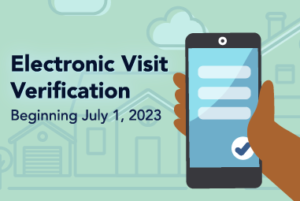
Everything you need to know about Electronic Visit Verification, so far
The California Department of Social Services (CDSS) will be implementing a change to the IHSS Electronic Visit Verification (EVV) system beginning July 1, 2023.


The California Department of Social Services (CDSS) will be implementing a change to the IHSS Electronic Visit Verification (EVV) system beginning July 1, 2023.
Our fight to protect privacy for providers and clients A federal law has mandated that all states implement Electronic Visit
The 21st Century CURES Act, federal legislation signed into law in December 2016, includes a small provision that could have